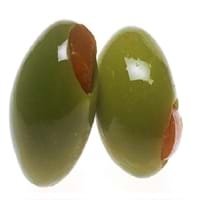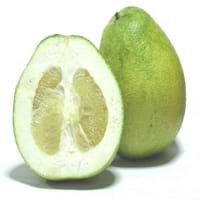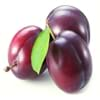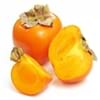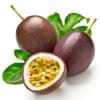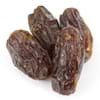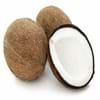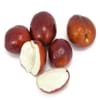Health Benefits
Cancer prevention, Helps in cartilage regeneration, Prevents macular degeneration, Treatment of alzheimer's disease
Cancer prevention, Heart care, Prevents Urinary Tract Infection
General Benefits
Anti oxidant properties, Anti-inflammatory properties, Boosts immune system, Controls blood pressure, Digestive aid, Maintains healthy cholesterol level
Digestive aid, Fights against infections, Flu treatment, Healing of wounds, Helps in weight loss, Treatment of common cold
Skin Benefits
Hydrates skin, Skin rejuvenation, Treatment of skin diseases
Anti-aging benefits, Brightens and lightens complexion
Hair Benefits
Acts as moisturizer, Good conditioner, Regulates hair growth
Promotes longer and healthier hair, Protects hair
Allergy Symptoms
NA
Abdominal cramps, Abdominal pains, Diarrhea, Lightheadedness, Nasal congestion, Nausea, Swallowing difficulties, Swelling of mouth, tongue or lips, Vomiting
Side Effects
Affects blood glucose levels, Dizziness, Stomach pain
Allergic reaction, Dizziness, Stomach pain
Best Time to Eat
Hardly eaten raw, Olive oil is consumed for many purposes.
As a snack in the late afternoon, Don't consume at night and before bed, Eat the fresh ones, avoid mixing with any other foods, don't eat after meal., Morning time (before lunch)
Vitamin A (Retinol)
Not Available
Vitamin B5 (Pantothenic Acid)
Not Available
Vitamin B9 (Folic acid)
Not Available
Vitamin C (Ascorbic Acid)
Vitamin E (Tocopherole)
Not Available
Vitamin K (Phyllochinone)
Not Available
Lutein+Zeaxanthin
Not Available
Calories in Fresh Fruit with Peel
Calories in Fresh Fruit without Peel
Not Available
Not Available
Calories in Frozen Form
Not Available
Not Available
Calories in Canned Form
Not Available
Calories in Jam
Not Available
Type
Tree fruit
Citrus, Tropical
Season
Spring, Summer
All seasons
Varieties
Manzanillo, Sevillano, Mission, Ascolano, Barouni, Gordal, Rubra and Picholine
Chandler, Cocktail, Cuban Shaddock, Hirado Buntan, Honey, Jaffa Red, Mato Buntan, Pomelit, Reinking, Siamese Sweet and Sweetie
Color
Black, Green, Purple, Yellow
Green, Pink, Red, Yellow
Inside Color
Brown
Creamy Yellow
Taste
Bitter
Juicy, Sweet
Origin
Eastern Mediterranean Region
Malaysia, South-Eastern Asia, Thailand
Soil Type
Well-drained
Clay, Loam, Sandy
Climatic Conditions
Warm to hot climate
Warm
Facts about
- In ancient Greece, 1st eye shadow was made by adding olive oil in ground charcoal.
- The most expensive form of olive oil is Extra Virgin.
- Largest type of olive tree is known as donkey tree & smallest one is called bullet.
- Flowers of pomelo fruit are used to make perfumes.
- Pomelo tree wood is used for the manufacture of tool handles.
- Life of pomelo tree is around 10 years.
- Height of pomelo can be 15-20 feet.
Other Countries
Algeria, Egypt, Greece, Italy, Morocco, Portugal, Syria, Tunisia, Turkey
Argentina, India, Israel, Mexico, South Africa, Sudan, Thailand, Turkey, United States of America
Top Importer
United States of America
Europe
Top Exporter
Italy
United States of America
Botanical Name
Olea europaea
Citrus maxima
Synonym
Not Available
Citrus grandis
Subkingdom
Tracheobionta
Tracheobionta
Division
Magnoliophyta
Magnoliophyta
Class
Magnoliopsida
Magnoliopsida
Order
Lamiales
Sapindales
Species
O. europaea
C. maxima
Generic Group
Olive
Citrus fruit
Difference Between Olive and Pomelo
We might think that Olive and Pomelo are similar with respect to nutritional value and health benefits. But the nutrient content of both fruits is different. Olive and Pomelo Facts such as their taste, shape, color, and size are also distinct. The difference between Olive and Pomelo is explained here.
The amount of calories in 100 gm of fresh Olive and Pomelo with peel is 115.00 kcal and 38.00 kcal and the amount of calories without peel is Not Available and Not Available respectively. Thus, Olive and Pomelo belong to High Calorie Fruits and Low Calorie Fruits category.These fruits might or might not differ with respect to their scientific classification. The order of Olive and Pomelo is Lamiales and Sapindales respectively. Olive belongs to Oleaceae family and Pomelo belongs to Rutaceae family. Olive belongs to Olea genus of O. europaea species and Pomelo belongs to Citrus genus of C. maxima species. Beings plants, both fruits belong to Plantae Kingdom.
